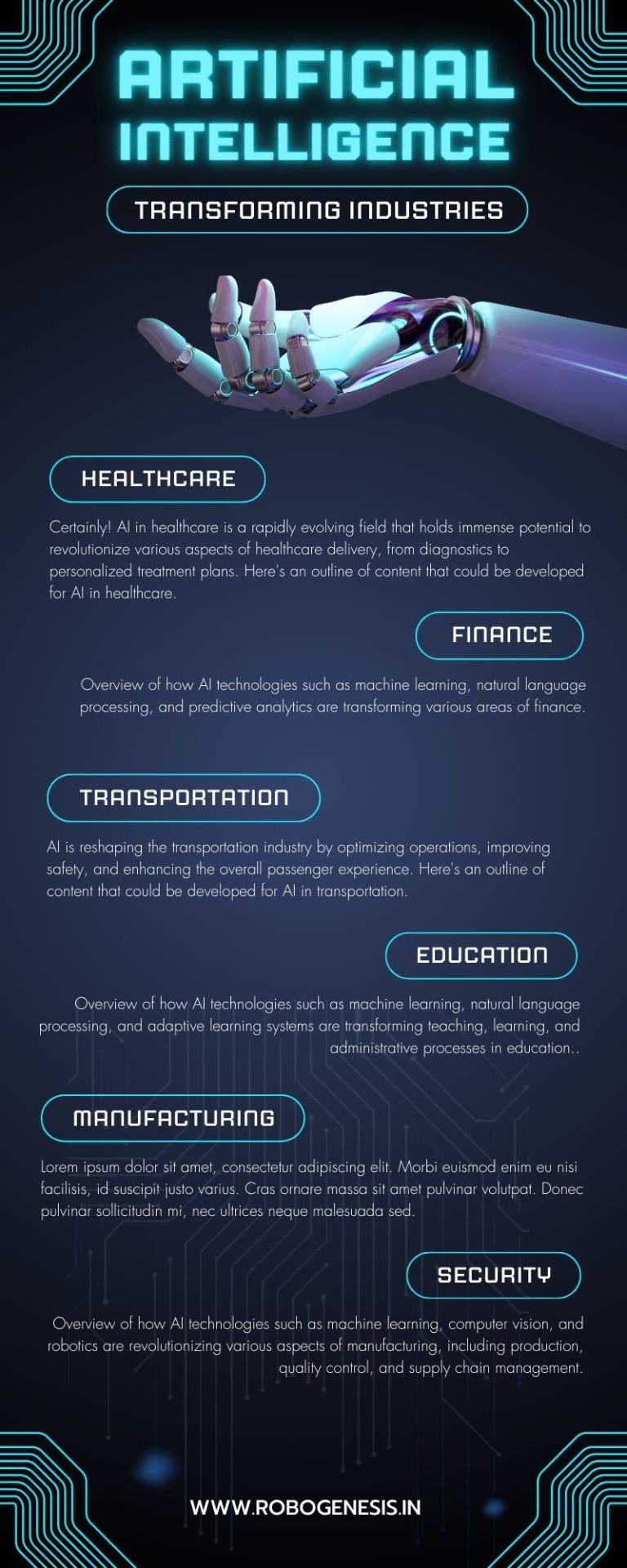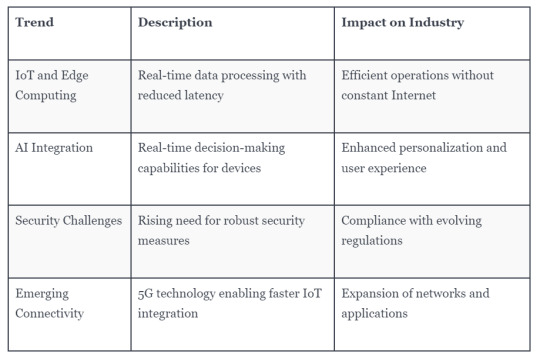#embedded and iot course
Explore tagged Tumblr posts
Text
Navigating Tomorrow: Embedded and IoT Training Course in Trivandrum

In today’s dynamic digital landscape, Embedded Systems and Internet of Things (IoT) have emerged as vital technologies reshaping industries worldwide. Trivandrum, a bustling technological hub, offers an advanced training program in Embedded and IoT, empowering the next wave of tech enthusiasts.
The Significance of Embedded and IoT Technologies
Embedded Systems and IoT have revolutionized connectivity, with billions of devices seamlessly linked to the internet. This connectivity extends beyond smartphones and laptops to include industrial equipment, leading to the rise of Industrial IoT (IIoT). These technologies serve as the foundation for future innovations, including Artificial Intelligence (AI).
Trivandrum: A Beacon of Technological Advancement
Nestled in Kerala's heart, Trivandrum boasts a thriving tech ecosystem, making it an ideal destination for aspiring technologists. With a conducive environment for learning and innovation, the city offers unparalleled opportunities for individuals pursuing Embedded and IoT training.
Exploring the Synergy of Embedded Systems and IoT
Embedded Systems form the backbone of IoT, enabling devices to collect, process, and transmit data seamlessly. This synergy facilitates the integration of smart technologies into various domains, driving efficiency and productivity.
The Road to Future Technologies
Artificial Intelligence (AI): Embedded Systems and IoT serve as catalysts for future innovations, laying the groundwork for advancements in AI. As the world transitions towards AI-driven solutions, professionals skilled in Embedded and IoT technologies are poised to lead the way, spearheading transformative changes across industries.
Embarking on the Embedded and IoT Training Journey in Trivandrum
Trivandrum's Embedded and IoT training course offers a comprehensive curriculum designed to equip students with practical skills and industry insights. Through hands-on learning experiences and real-world projects, participants gain a deep understanding of Embedded Systems and IoT principles.
Hands-On Learning and Practical Experience
The course emphasizes hands-on learning, providing students with the opportunity to design, develop, and deploy embedded solutions. With access to state-of-the-art laboratories and industry-standard tools, learners acquire invaluable practical experience essential for their professional journey.
Industry Opportunities and Exposure
Trivandrum's vibrant tech community fosters collaboration and innovation, offering students ample opportunities for internships and industry exposure. Engaging with leading tech companies and startups, participants gain firsthand knowledge of industry trends and best practices.
Meeting the Rising Demand for Embedded and IoT Professionals
As industries embrace digital transformation, the demand for skilled Embedded and IoT professionals continues to soar. With expertise in these domains, individuals are well-positioned to capitalize on emerging job opportunities and contribute to the advancement of technology.
Embedded and IoT training in Trivandrum provides a gateway to a rewarding career in technology. With its focus on practical learning, industry exposure, and future-ready skills, the course equips individuals to thrive in a dynamic and ever-evolving tech landscape. As the world progresses towards AI-driven solutions, Embedded and IoT professionals play a pivotal role in shaping the future of innovation and connectivity.
#embedded and iot course#Embedded and IoT training in Trivandrum#Embedded course in Trivandrum#Embedded training in Trivandrum
0 notes
Text
B.Tech in Electronics Engineering: Courses, Careers & Future Scope Explained
In today’s hyper-connected world where technology evolves faster than we can keep up, one engineering discipline remains at the core of it all—Electronics Engineering. From smartphones and satellite systems to electric vehicles and smart cities, the fingerprints of electronics engineers are everywhere.
A B.Tech in Electronics Engineering is not just another undergraduate degree. It’s a gateway to a future shaped by innovation, automation, and global impact.
Whether you’re a student planning your engineering path, a parent looking for clarity, or a professional exploring career pivots, this comprehensive guide will walk you through the course structure, career scope, top recruiters, and global opportunities available with a B.Tech in Electronics Engineering.
What is B.Tech in Electronics Engineering?
B.Tech in Electronics Engineering is a four-year undergraduate program that focuses on the principles and applications of electronics, electromagnetism, circuit design, communication systems, embedded systems, and signal processing.
It merges theoretical knowledge with practical lab-based learning, preparing students for diverse industries such as telecommunications, defense, manufacturing, IT, healthcare, and research.
🎓 Explore more academic insights and counseling services at Edunet Educare
Why Choose Electronics Engineering?
Ubiquity of Electronics: Everything from your TV to Tesla runs on electronics.
Diverse Career Options: Graduates can work in design, development, production, testing, or even sales and consultancy.
R&D Opportunities: With AI, robotics, and IoT booming, R&D roles are plentiful.
Government & Public Sector Jobs: A wide range of jobs await in ISRO, DRDO, BEL, and more.
International Relevance: The skills learned are transferable globally.
In short, it's a future-proof degree in a digitally driven world.
Eligibility Criteria
To enroll in a B.Tech in Electronics Engineering program in India, aspirants typically need:
Completion of Class 12 with Physics, Chemistry, and Mathematics (PCM)
A qualifying score in entrance exams such as:
JEE Main / Advanced
State-level entrance tests (MHT CET, KCET, WBJEE, etc.)
Private university exams (VITEEE, SRMJEEE, etc.)
Core Subjects You’ll Study
Here’s a snapshot of some foundational and advanced subjects included in the Electronics Engineering curriculum:
📘 First Year:
Engineering Mathematics
Engineering Physics/Chemistry
Basics of Electrical & Electronics Engineering
Programming in C/C++
Engineering Graphics
⚙️ Second Year:
Analog & Digital Electronics
Network Theory
Signals and Systems
Data Structures
Electronic Devices and Circuits
📡 Third Year:
Microprocessors and Microcontrollers
Control Systems
Communication Engineering
Embedded Systems
VLSI Design
🔧 Final Year:
Industrial Training / Internship
Major Project
Electives (like Robotics, IoT, AI in Electronics)
Laboratory work, mini-projects, seminars, and workshops play a huge role in enhancing real-world skills.
Top Colleges Offering B.Tech in Electronics Engineering (India)
IITs (Delhi, Bombay, Kharagpur, etc.)
NITs (Trichy, Surathkal, Warangal, etc.)
BITS Pilani
Delhi Technological University (DTU)
VIT Vellore
SRM Institute of Science and Technology
Each institution has its own admission procedure, faculty expertise, placement track record, and industry tie-ups.
Career Opportunities After B.Tech in Electronics Engineering
The career landscape for electronics engineers is vast and continues to evolve with technological advancements. Some key career paths include:
🖥️ Design & Development Engineer
Work with product teams to design consumer electronics, industrial machines, or automotive components.
📶 Communication Engineer
Join telecom giants like Airtel, Jio, or Vodafone to develop and maintain communication networks.
⚙️ Embedded Systems Engineer
Program microcontrollers and design embedded solutions for appliances, vehicles, and robots.
🛰️ Satellite & Aerospace Engineer
Work in space research, satellite design, and mission planning at ISRO or private space tech firms.
💻 Software Developer (Electronics-based)
Many electronics engineers transition into software development, especially in hardware-software integrated projects.
🏢 PSU/Government Jobs
Crack GATE or other exams to work with DRDO, ISRO, BHEL, ECIL, or Indian Railways.
🌍 International Jobs
With relevant certifications and experience, engineers can work in the US, Germany, Japan, and other tech-heavy nations.
💼 Curious about career counseling or course selection? Visit Edunet Educare for personalized guidance.
Higher Studies & Certifications
Electronics Engineering opens doors to prestigious postgraduate paths:
M.Tech / MS in Electronics & Communication / VLSI / Embedded Systems
MBA in Technology Management or Operations
Certifications in:
Embedded Systems (ARM, STM32)
IoT and AI (Coursera, edX)
MATLAB & Simulink
PCB Design and Circuit Simulation
Top Recruiters in Electronics Engineering
India’s growing electronics and semiconductor ecosystem has led to booming demand. Here are some top recruiters:
Intel
Texas Instruments
Qualcomm
Samsung R&D
TCS
Wipro
Infosys
ISRO
DRDO
L&T
BEL
Reliance Jio
Nokia
CISCO
Job roles vary from VLSI designers to testing engineers, field application engineers, and hardware developers.
Skills That Set You Apart
To thrive in the electronics field, complement your academic degree with the following:
Proficiency in programming (C/C++, Python, Verilog)
Knowledge of PCB designing tools like Eagle or Altium
Understanding of communication protocols (UART, SPI, I2C)
Problem-solving and logical thinking
Ability to read datasheets and design technical documentation
Future Scope & Emerging Trends
The landscape of electronics engineering is transforming rapidly. New-age domains gaining traction include:
Internet of Things (IoT)
Artificial Intelligence & Machine Learning in Hardware
Smart Grids & Renewable Energy Systems
Electric Vehicle Design
VLSI & Semiconductor Manufacturing
Autonomous Systems & Robotics
With India investing heavily in indigenous chip-making and global tech giants expanding operations, electronics engineers are in higher demand than ever before.
Conclusion: A Degree That Powers Innovation
A B.Tech in Electronics Engineering isn’t just about learning circuits and codes. It’s about being at the frontline of technological revolution—designing solutions that improve lives, create smarter cities, and push boundaries in space, healthcare, and industry.
If you're passionate about electronics, love solving problems, and dream of a career that combines creativity with cutting-edge tech, this is your calling.
🌐 Ready to explore the world of electronics engineering? Get expert counseling and curated content at Edunet Educare
#B.Tech in Electronics Engineering#Electronics and Communication#Engineering Courses India#Careers in Electronics#Top Engineering Branches#Edunet Educare#Electronics Career Scope#GATE Exam#Embedded Systems#IoT in Engineering#Best Colleges for B.Tech#PCB Design#VLSI Engineering#Jobs for Electronics Engineers#Electronics Government Jobs#Tech Education India#STEM Courses#Engineering Admissions#Career Counseling India#Future of Electronics
0 notes
Text
Stay Ahead in the Industry with IIT Jammu’s Specialized PG Certificate Programs
IIT Jammu’s PG Certificate Programs are designed to equip professionals and students with the latest industry-relevant skills. These PG Certificate Programs provide an excellent opportunity to gain specialized knowledge in high-demand fields. By enrolling in these courses, learners can enhance their expertise and stay ahead in the competitive job market.

Master IoT Technologies with an IoT Certification Course
The IoT Certification Course at IIT Jammu provides a comprehensive understanding of Internet of Things (IoT) technologies. Participants learn about IoT architecture, cloud integration, and security protocols, ensuring they are well-equipped to develop and manage IoT solutions in various industries.
Learn Embedded Systems and IoT Applications
The IoT and Embedded Systems program focuses on the integration of IoT with embedded technologies. Learners explore microcontrollers, real-time operating systems, and sensor-based automation, gaining hands-on experience in designing and implementing IoT-driven solutions for smart applications.
Explore Modern Marketing with a Digital and Neuro Marketing Course
The Digital and Neuro Marketing Course is tailored for professionals looking to master consumer behavior analysis and digital marketing techniques. This course delves into data-driven marketing strategies, neuromarketing insights, and analytics-based decision-making, helping learners optimize campaigns for better audience engagement and business success.
Why Choose IIT Jammu Programs?
Industry-Centric Curriculum – Courses are developed in collaboration with industry experts.
Hands-on Learning – Gain practical exposure through real-world applications.
Recognized Certification – Earn a prestigious IIT Jammu certification to boost career prospects.
Flexible Learning Approach – Designed to accommodate working professionals and students.
Take the Next Step in Your Professional Journey
IIT Jammu’s PG Certificate Programs offer the perfect pathway for individuals aiming to upskill in emerging domains. Whether you are interested in IoT, embedded systems, or digital marketing, these programs provide a strong foundation for career advancement.
Enroll today and accelerate your career with IIT Jammu’s specialized certificate programs!
#iot and embedded systems#iot certification course#Digital and Neuro Marketing course#PG Certificate Programs
0 notes
Text
Top 5 Tips for Learning IoT and AI

As we navigate the evolving landscapes of IoT and AI, it’s essential we establish a strong foundation in programming languages like Python and Java. Engaging in hands-on projects not only solidifies our understanding but also bridges the gap between theory and practice. By connecting with online communities, we can share insights and resources that enhance our learning. However, staying updated on industry trends and exploring real-world case studies are equally crucial. So, what are the specific strategies we can employ to maximize our efforts in these areas?
Build a Strong Programming Foundation

While we dive into the realms of IoT and AI, it’s crucial to build a strong programming foundation. Having solid programming skills not only aids in understanding complex algorithms but also equips us to handle data effectively. We should start by mastering languages like Python and Java, as they’re widely used in both fields.
Data analysis is equally important, so familiarizing ourselves with libraries like Pandas and NumPy will enhance our ability to manipulate and interpret data.
Next, we need to define clear objectives for our projects. Establishing SMART goals helps us stay focused and measure our progress. Identifying relevant data sources is essential too—both internal and external—ensuring we gather high-quality data for training AI models.
As we collect data, let’s pay attention to cleaning and preprocessing techniques, as these steps significantly impact the performance of our models.
Lastly, we should engage with online communities and forums. Collaborating with peers not only enriches our learning experience but also exposes us to diverse perspectives.
Engage in Hands-On Projects

Engaging in hands-on projects is one of the most effective ways to deepen our understanding of IoT and AI. By applying theoretical knowledge, we can see how these concepts play out in real-world scenarios.
Let’s start by building small projects that incorporate IoT devices, like using sensors to track environmental conditions or automating tasks within our homes. This practical application helps us grasp the mechanics behind these technologies.
As we progress, we can explore more complex setups, such as creating smart classrooms. Imagine using IoT-enabled projectors and interactive whiteboards to enhance collaborative learning. These projects not only solidify our skills but also demonstrate the power of IoT in educational environments.
Moreover, we shouldn’t shy away from experimenting with AI algorithms. By developing simple machine learning models, we can analyze data and gain insights into how AI interprets information. This hands-on experience encourages creativity and problem-solving, essential skills in this evolving field.
Ultimately, engaging in hands-on projects empowers us to bridge the gap between theory and practice, making our journey in IoT and AI both exciting and impactful.
Let’s dive in and start building!
Join Online Communities

In today’s digital age, joining online communities can significantly enhance our learning experience in IoT and AI. These platforms provide exclusive access to structured courses and resources that cater to our specific learning needs.
We can participate in live learning sessions with top educators, allowing us to interact directly with experts and fellow learners.
Networking opportunities abound within these communities. We can connect with diverse individuals who share our interests, fostering collaboration and support.
Engaging in discussions and exclusive chat groups enriches our understanding and exposes us to different perspectives, greatly benefiting our learning journey.
Moreover, many online communities offer certification upon course completion, which we can showcase on platforms like LinkedIn. This recognition enhances our professional credibility and supports our career advancement.
Stay Updated on Trends

Staying on top of trends in IoT and AI is essential for anyone looking to thrive in these rapidly evolving fields. We need to recognize the staggering growth projections, like the IoT market reaching $650 billion by 2026 and the expected 30.9 billion active IoT devices. This rapid expansion means we must continuously educate ourselves about emerging technologies and industry shifts.
We should pay attention to key trends, such as the ongoing chip shortage impacting IoT investments, with many semiconductor executives predicting supply chain improvements. Additionally, as IoT devices proliferate, security becomes a pressing concern. Staying informed about new regulations and security measures will help us navigate this landscape effectively.
We must also explore how AI is increasingly intertwined with IoT, providing real-time insights and enhancing decision-making across various sectors. By keeping up with research, attending webinars, and reading relevant publications, we can ensure our knowledge remains current and applicable.
In this way, we can position ourselves not just as learners but as informed participants ready to seize opportunities in the dynamic fields of IoT and AI.
Explore Real-World Case Studies

Exploring real-world case studies offers us valuable insights into how IoT and AI technologies are transforming various industries. For example, the iRobot Roomba uses AI to efficiently map home layouts and optimize cleaning patterns. This innovation, first launched in 2002, paved the way for widespread consumer adoption of smart home devices.
Similarly, Nest Labs’ smart thermostat learns user preferences, adjusting energy use accordingly, and showcases AI’s impact on energy efficiency.
In the automotive sector, Tesla’s self-driving technology employs machine learning to predict driver behavior based on extensive road data, demonstrating the potential of AI in transportation.
Additionally, companies like Kairos are leveraging AI for marketing insights, serving high-profile clients like Nike and IBM.
As we delve into these applications, we also need to consider the ethical implications, especially concerning privacy and security with technologies like facial recognition.
Frequently Asked Questions
How to Learn AI and Iot?
To learn AI and IoT effectively, we should focus on programming and data analysis. Let’s engage in hands-on projects, join communities, and stay updated on trends to deepen our understanding and practical skills.
Which Is Better to Learn Iot or Ai?
When deciding between IoT and AI, we should consider our interests. If we enjoy hardware and connectivity, IoT’s practical applications might excite us. If data analysis fascinates us, AI’s predictive capabilities could be more appealing.
How Can AI Be Used in Iot?
AI enhances IoT by enabling smart devices to make real-time decisions, learn patterns, and automate tasks. Together, they improve efficiency and responsiveness in various sectors, transforming how we interact with technology daily.
Which Is Better, Aith or Ai?
When we compare AI and AIth, it’s clear that AIth offers greater integration by combining AI’s capabilities with IoT. This synergy allows for smarter decision-making and enhanced efficiency in real-world applications.
Conclusion
In conclusion, mastering IoT and AI starts with a solid programming foundation and practical experience. By diving into hands-on projects, we can truly grasp these technologies. Connecting with online communities keeps us informed and inspired, while staying updated on industry trends ensures we remain relevant. Finally, exploring real-world case studies helps us understand the ethical implications of our work. Let’s embrace this journey together and unlock the potential of IoT and AI!
How Zekatix Helps You on the Journey
Zekatix is here to make your journey into IoT and AI smoother, combining all the steps essential for mastering these technologies. With courses that build your programming foundation, hands-on project resources, and insightful case studies, Zekatix equips you with everything you need to grow. Our platform connects learners to active online communities, keeping you updated on the latest trends and innovations in IoT and AI. As you explore these rapidly evolving fields, Zekatix serves as your partner in learning and innovation, helping you thrive in tech. Join today and take the next leap toward mastering the future of technology!
Sign up for free courses here. Visit Zekatix for more information.
Sign up for free courses here.
Visit Zekatix for more information.
#edtech company#courses#embedded systems#nanotechnology#artificial intelligence#embeded#academics#online courses#robotics#zekatix#AI#IOT#iotsolutions#iot applications#iot development services#innovation#embedded#iot platform#techinnovation
0 notes
Text

"Launch Your Career: Embedded System and Robotics Internship in Bhubaneswar for Hands-on Experience"
Are you prepared to start a career in the fascinating subjects of robotics and embedded systems? There's nowhere else to look! To help you get started in your career, our internship program in Bhubaneswar provides practical experience and priceless industry knowledge. You will have the chance to work on actual projects with a focus on practical learning, which will help you hone your skills and obtain priceless experience. Every step of the way, our knowledgeable mentors will help you build a solid foundation in robotics and embedded systems. Don't put off growing your career any longer; sign up for our Bhubaneswar internship program and set yourself up for success in the tech industry. For more information visit our website-https://robogenesis.in/projects.php
0 notes
Text
Does Sustainability Go Hand in Hand with Technology and the Global Shift to Electric Power?
Explore how Sustainability Next to Technology is Connected to Global Move Towards Electric Power.
The new generation of moving the world towards cleaner energy has electric power at the core of this transformation.
But do they, sustainability and technology, indeed go hand in hand?
Well, it’s no longer a hypothetical question, but a problem that determines the future path of power distribution and energy management.
Growing Demand for Sustainable Solutions:
Not long ago, the dream of electric power turned into a reality before you know it.
Cleaner has become a key aspiration of governments, industries, and consumers alike.
Sustainability imparts a different meaning to reducing carbon footprints.
This also means making power systems smarter and less dangerous, more efficient, cost-effective, and probably even creating a bit of redundancy.
This will mean purchasing components for the switchgear industry that reduce energy waste, extend life cycles, and facilitate the interfacing of renewable sources.
Energy-efficient circuit breakers, digital monitoring systems, modular switchgear components, and other accessories are becoming key players in the evolution.
Smart Technology: The Backbone of Sustainable Switchgear
The way the whole change in switchgear technology moves is, of course, toward modernization.
IoT-type embedded devices for monitoring, AI-driven prediction of maintenance needs, and design for energy-efficient low-voltage contactors all transform the way the whole power is managed.
It ensures reduced energy losses and very much optimized peak condition behavior, as well as improved safety-all these fulfilling both sustainability and day-to-day operating efficiency objectives.
1. Digital Monitoring and Automation
It is all about real-time data.
Smart monitoring solutions provide instant access to information regarding the efficiency of the use of electricity, fault detection, and energy efficiency.
With this, downtime and failures incurred can be minimized, and energy consumption can be optimized-thus, saving unnecessary wastages of electricity.
2. Modular and Recyclable Components
Energy efficiency doesn’t only mean sustainability as far as power is concerned-it also has to do with waste.
Adaptive switchgear designs allow easy upgrades and replacements, which can prolong the life cycle of an electrical system while simultaneously reducing the amount of waste made for materials.
Adoption of recyclable and non-toxic materials in accessories for switchgear also minimizes environmental impact.
3. Energy-Efficient Contactors and Circuit Breakers
New advanced low-loss contactor and circuit breaker technologies, which increase energy efficiency, cut down heat dissipation and losses in the circuits.
Fewer losses in energy mean low operating costs and a reduced carbon footprint; these are the two main factors that are becoming crucial for today’s modern companies striving to meet sustainability goals.
Switchgear Accessories to Play a Critical Role in the Green Revolution
It is only through highly competent switchgear accessories that a truly sustainable power infrastructure may be realized: from low-voltage surge protectors that ensure a longer life for the system to biodegradable insulation materials, the right kind of components would all play their part in making a difference.
Eco friendly insulation: Using sustainable materials in insulation applications reduces the negative impacts on the environment while maintaining the safety and efficiency associated with conventional insulation types.
Adaptive Protection Relays: These help to ensure the stability of power and eliminate the breakdowns, thus eliminating the costs of frequent replacement and repairs.
Using Busbar Systems to Reduce Energy Losses: The more efficient a conductor is, the less its resistance and heat loss, and the better it transmits energy.
Balancing Innovation and Cost with Performance
In fact, the passage from several manufacturers and traders is the perception that sustainability involves more costs.
But in reality, such first costs are outweighed by very many long-term benefits.
The merger of lower maintenance costs, lower periodicity recall for new replacement pieces, and greater shelf life compliance does make sustainable switchgear a smart business choice.
Conclusion: The Future of Sustainable Energy
Technology and sustainability aren’t separate paths any longer; they’re bearing down more on a linear convergence as the world flows into a different shape concerning energy.
Change is a space that we all own.
The future is here-now!
6 notes
·
View notes
Text
Why Python Will Thrive: Future Trends and Applications
Python has already made a significant impact in the tech world, and its trajectory for the future is even more promising. From its simplicity and versatility to its widespread use in cutting-edge technologies, Python is expected to continue thriving in the coming years. Considering the kind support of Python Course in Chennai Whatever your level of experience or reason for switching from another programming language, learning Python gets much more fun.

Let's explore why Python will remain at the forefront of software development and what trends and applications will contribute to its ongoing dominance.
1. Artificial Intelligence and Machine Learning
Python is already the go-to language for AI and machine learning, and its role in these fields is set to expand further. With powerful libraries such as TensorFlow, PyTorch, and Scikit-learn, Python simplifies the development of machine learning models and artificial intelligence applications. As more industries integrate AI for automation, personalization, and predictive analytics, Python will remain a core language for developing intelligent systems.
2. Data Science and Big Data
Data science is one of the most significant areas where Python has excelled. Libraries like Pandas, NumPy, and Matplotlib make data manipulation and visualization simple and efficient. As companies and organizations continue to generate and analyze vast amounts of data, Python’s ability to process, clean, and visualize big data will only become more critical. Additionally, Python’s compatibility with big data platforms like Hadoop and Apache Spark ensures that it will remain a major player in data-driven decision-making.
3. Web Development
Python’s role in web development is growing thanks to frameworks like Django and Flask, which provide robust, scalable, and secure solutions for building web applications. With the increasing demand for interactive websites and APIs, Python is well-positioned to continue serving as a top language for backend development. Its integration with cloud computing platforms will also fuel its growth in building modern web applications that scale efficiently.
4. Automation and Scripting
Automation is another area where Python excels. Developers use Python to automate tasks ranging from system administration to testing and deployment. With the rise of DevOps practices and the growing demand for workflow automation, Python’s role in streamlining repetitive processes will continue to grow. Businesses across industries will rely on Python to boost productivity, reduce errors, and optimize performance. With the aid of Best Online Training & Placement Programs, which offer comprehensive training and job placement support to anyone looking to develop their talents, it’s easier to learn this tool and advance your career.

5. Cybersecurity and Ethical Hacking
With cyber threats becoming increasingly sophisticated, cybersecurity is a critical concern for businesses worldwide. Python is widely used for penetration testing, vulnerability scanning, and threat detection due to its simplicity and effectiveness. Libraries like Scapy and PyCrypto make Python an excellent choice for ethical hacking and security professionals. As the need for robust cybersecurity measures increases, Python’s role in safeguarding digital assets will continue to thrive.
6. Internet of Things (IoT)
Python’s compatibility with microcontrollers and embedded systems makes it a strong contender in the growing field of IoT. Frameworks like MicroPython and CircuitPython enable developers to build IoT applications efficiently, whether for home automation, smart cities, or industrial systems. As the number of connected devices continues to rise, Python will remain a dominant language for creating scalable and reliable IoT solutions.
7. Cloud Computing and Serverless Architectures
The rise of cloud computing and serverless architectures has created new opportunities for Python. Cloud platforms like AWS, Google Cloud, and Microsoft Azure all support Python, allowing developers to build scalable and cost-efficient applications. With its flexibility and integration capabilities, Python is perfectly suited for developing cloud-based applications, serverless functions, and microservices.
8. Gaming and Virtual Reality
Python has long been used in game development, with libraries such as Pygame offering simple tools to create 2D games. However, as gaming and virtual reality (VR) technologies evolve, Python’s role in developing immersive experiences will grow. The language’s ease of use and integration with game engines will make it a popular choice for building gaming platforms, VR applications, and simulations.
9. Expanding Job Market
As Python’s applications continue to grow, so does the demand for Python developers. From startups to tech giants like Google, Facebook, and Amazon, companies across industries are seeking professionals who are proficient in Python. The increasing adoption of Python in various fields, including data science, AI, cybersecurity, and cloud computing, ensures a thriving job market for Python developers in the future.
10. Constant Evolution and Community Support
Python’s open-source nature means that it’s constantly evolving with new libraries, frameworks, and features. Its vibrant community of developers contributes to its growth and ensures that Python stays relevant to emerging trends and technologies. Whether it’s a new tool for AI or a breakthrough in web development, Python’s community is always working to improve the language and make it more efficient for developers.
Conclusion
Python’s future is bright, with its presence continuing to grow in AI, data science, automation, web development, and beyond. As industries become increasingly data-driven, automated, and connected, Python’s simplicity, versatility, and strong community support make it an ideal choice for developers. Whether you are a beginner looking to start your coding journey or a seasoned professional exploring new career opportunities, learning Python offers long-term benefits in a rapidly evolving tech landscape.
#python course#python training#python#technology#tech#python programming#python online training#python online course#python online classes#python certification
2 notes
·
View notes
Text
What is Python, How to Learn Python?
What is Python?
Python is a high-level, interpreted programming language known for its simplicity and readability. It is widely used in various fields like: ✅ Web Development (Django, Flask) ✅ Data Science & Machine Learning (Pandas, NumPy, TensorFlow) ✅ Automation & Scripting (Web scraping, File automation) ✅ Game Development (Pygame) ✅ Cybersecurity & Ethical Hacking ✅ Embedded Systems & IoT (MicroPython)
Python is beginner-friendly because of its easy-to-read syntax, large community, and vast library support.
How Long Does It Take to Learn Python?
The time required to learn Python depends on your goals and background. Here’s a general breakdown:
1. Basics of Python (1-2 months)
If you spend 1-2 hours daily, you can master:
Variables, Data Types, Operators
Loops & Conditionals
Functions & Modules
Lists, Tuples, Dictionaries
File Handling
Basic Object-Oriented Programming (OOP)
2. Intermediate Level (2-4 months)
Once comfortable with basics, focus on:
Advanced OOP concepts
Exception Handling
Working with APIs & Web Scraping
Database handling (SQL, SQLite)
Python Libraries (Requests, Pandas, NumPy)
Small real-world projects
3. Advanced Python & Specialization (6+ months)
If you want to go pro, specialize in:
Data Science & Machine Learning (Matplotlib, Scikit-Learn, TensorFlow)
Web Development (Django, Flask)
Automation & Scripting
Cybersecurity & Ethical Hacking
Learning Plan Based on Your Goal
📌 Casual Learning – 3-6 months (for automation, scripting, or general knowledge) 📌 Professional Development – 6-12 months (for jobs in software, data science, etc.) 📌 Deep Mastery – 1-2 years (for AI, ML, complex projects, research)
Scope @ NareshIT:
At NareshIT’s Python application Development program you will be able to get the extensive hands-on training in front-end, middleware, and back-end technology.
It skilled you along with phase-end and capstone projects based on real business scenarios.
Here you learn the concepts from leading industry experts with content structured to ensure industrial relevance.
An end-to-end application with exciting features
Earn an industry-recognized course completion certificate.
For more details:
#classroom#python#education#learning#teaching#institute#marketing#study motivation#studying#onlinetraining
2 notes
·
View notes
Text
Exploring Embedded Technologies: Comprehensive Training Courses at TechnoScripts
TechnoScripts presents an enriching Embedded Course designed to equip individuals with the essential knowledge and skills required to navigate the intricacies of embedded systems effectively. Led by seasoned professionals and industry experts, our comprehensive curriculum covers a broad spectrum of topics, ranging from microcontroller programming and embedded hardware design to real-time operating systems and IoT integration.
What distinguishes our Embedded Course is its hands-on approach, allowing participants to translate theoretical concepts into practical solutions through interactive lab sessions and real-world projects. With access to cutting-edge tools and resources, learners can immerse themselves in the intricacies of embedded technology, fostering creativity and innovation along the way.
Whether you're a beginner exploring the foundations of embedded systems or an experienced professional seeking to refine your expertise, TechnoScripts provides a supportive learning environment tailored to your needs. Join us on this transformative journey and unlock your potential to become a proficient embedded systems engineer, ready to tackle the challenges of tomorrow's technology landscape.

#automotiveembeddedsystemscourse#automotiveembeddedtestingcourse#automotiveembeddedinstitute#automotiveembeddedcourse#marketing#python#linux#accounting#automotiveembeddedclasses#machine learning
3 notes
·
View notes
Text
Why Use IoT In Smart City Development?
The Internet of Things (IoT) plays a pivotal role in building smart cities by enabling the seamless connection of devices, infrastructure, and systems to improve urban living. IoT sensors and devices collect real-time data from transportation networks, energy grids, water systems, waste management units, and public safety platforms. This data-driven approach allows city administrators to make informed decisions, enhance operational efficiency, and reduce resource wastage.
For example, smart traffic management systems use IoT to monitor traffic flow and adjust signals in real-time, minimizing congestion and emissions. Waste bins embedded with IoT sensors notify municipal services when they need to be emptied, reducing unnecessary fuel consumption. Smart lighting systems automatically adjust brightness based on movement and time of day, significantly conserving energy. IoT also enhances public safety by integrating surveillance systems and emergency response networks for quicker action during incidents.
Moreover, the integration of IoT in smart cities fosters sustainable development by optimizing utilities and reducing environmental impact. As urban populations grow, the importance of efficient, scalable, and responsive infrastructure increases making IoT an essential component of modern urban planning.
To explore this transformative technology in-depth, check out an Internet of Things Course.
0 notes
Text
Elevate Your Career with IIT Jammu’s Industry-Focused PG Certificate Programs
In today’s fast-evolving professional landscape, gaining industry-relevant expertise is essential for career growth. IIT Jammu, offers cutting-edge PG Certificate Programs that empower professionals and students with in-demand skills. These programs are designed to provide hands-on learning experiences in advanced domains, ensuring learners stay ahead in their respective industries.

Explore Industry-Oriented PG Certificate Programs at IIT Jammu
IIT Jammu’s provides a range of specialized courses tailored to meet industry needs. Whether you are looking to upskill in IoT and Embedded Systems, dive into Digital and Neuro Marketing, or explore the latest advancements in IoT Certification Courses, IIT Jammu has the right program for you.
Courses Offered by IIT Jammu
PG Certificate Program in IoT and Embedded Systems
Learn the fundamentals of the Internet of Things (IoT) and embedded systems.
Gain hands-on experience with real-world applications in automation, smart devices, and industry 4.0.
PG Certificate Program in Digital and Neuro Marketing
Understand consumer behavior using neuroscience principles.
Learn digital marketing strategies, analytics, and data-driven decision-making.
Why Choose IIT Jammu’s PG Certificate Programs?
Industry-Driven Curriculum – Programs are designed by experts to align with current industry demands.
Hands-on Learning – Gain practical exposure through real-world projects and case studies.
IIT Jammu Certification – Enhance your professional credibility with an esteemed certification.
Flexible Learning – Designed for working professionals to upskill without disrupting their career.
Who Can Enroll?
Working professionals seeking career advancement.
Graduates aspiring to enter tech-driven industries.
Entrepreneurs looking to leverage IoT and digital marketing for business growth.
Take the Next Step in Your Career
IIT Jammu’s PG Certificate Programs offer an unparalleled opportunity to acquire industry-specific knowledge and stay ahead in a competitive job market. Whether you want to specialize in IoT and Embedded Systems, earn an IoT Certification Course, or explore the exciting field of Digital and Neuro Marketing, these programs provide the expertise you need.
Don't miss the chance to upgrade your skills with IIT Jammu. Enroll today and unlock new career opportunities!
#Digital and Neuro Marketing course#IoT and Embedded Systems#IoT Certification Course#PG Certificate Programs
0 notes
Text
Why Choose IoT Architecture Courses for Embedded Systems?

When we consider the rapid advancements in technology, it’s clear that IoT architecture courses for embedded systems present a compelling opportunity for us all. These courses not only enhance our understanding of crucial components like gateways and cloud services but also sharpen our problem-solving skills through practical applications. By engaging in such programs, we position ourselves at the forefront of a sector that’s increasingly focused on automation and data-driven solutions. But what specific career advantages can we expect, and how do these skills translate into real-world applications?
Benefits of IoT Architecture Courses

Gaining expertise in IoT architecture courses offers us a multitude of benefits that are crucial in today’s tech-driven world. These courses equip us with essential skills needed to navigate the complexities of embedded systems and IoT integration. By understanding key components like internet gateways, edge IoT, and cloud services, we enhance our ability to design effective solutions tailored to diverse applications.
As we dive into the layers of IoT architecture, we learn to leverage the perception, network, and application layers, ensuring that our systems gather, process, and deliver data efficiently. This knowledge empowers us to create intelligent, connection-aware frameworks that enhance interaction among various IoT components.
Moreover, these courses prepare us to meet the demands of a rapidly evolving industry, enabling us to drive technological advancements. We gain insights into data integration, which combats fragmentation and promotes synergy between devices.
With a strong foundation in IoT architecture, we position ourselves as valuable assets in any organization, capable of facilitating automation and informed decision-making. Overall, pursuing IoT architecture courses opens doors to new opportunities and equips us with the tools to succeed in a connected world.
Enhancing Problem-Solving Skills

Enhancing our problem-solving skills is a crucial aspect of participating in IoT architecture courses, as these programs challenge us to tackle complex scenarios through innovative thinking. By engaging with hands-on projects that simulate real-world situations, we develop the ability to analyze problems, brainstorm solutions, and implement effective strategies.
The curriculum emphasizes microcontroller programming and sensor integration, pushing us to think critically and creatively about how to design and optimize embedded systems. Our learning experiences are directly tied to industry-relevant skills, ensuring we’re equipped to address the technological challenges we’ll encounter in our careers.
Additionally, the hybrid learning model allows us to balance theoretical knowledge with practical application, reinforcing our problem-solving abilities. Working with tools like Arduino and Raspberry Pi, we gain firsthand experience in troubleshooting and refining our designs.
Ultimately, these courses cultivate a mindset of innovation and resilience, preparing us to approach problems with confidence. As we enhance our skills, we not only position ourselves for personal growth but also contribute to the development of impactful IoT solutions that can transform industries and improve lives.
Real-World Applications of IoT

As we refine our problem-solving skills in IoT architecture courses, we also discover the vast range of real-world applications that IoT technology offers. One of the most impactful areas is healthcare, where wearable devices allow for remote monitoring of patients, leading to personalized treatment plans and reduced hospital stays.
In our homes, IoT enhances convenience and security, enabling us to control lighting, climate, and security systems remotely while optimizing energy use.
Industrial applications also thrive on IoT, as data analysis and sensors increase operational efficiency and minimize downtime. Smart cities benefit from IoT solutions, improving traffic management and waste disposal while promoting sustainable living.
In agriculture, IoT facilitates precise monitoring of crops and livestock, leading to better resource management. Transportation and logistics see significant advancements through IoT, with real-time data improving route planning and vehicle diagnostics.
Each of these applications not only enhances our daily lives but also underscores the critical role of IoT in shaping modern society. As we dive deeper into these applications, we’re better equipped to innovate and drive meaningful change in various sectors.
Career Opportunities in IoT

The world of IoT is brimming with career opportunities that promise not just competitive salaries but also a chance to shape the future of technology. Many roles in this dynamic field typically offer salaries exceeding annually, making it an attractive option for those looking to advance their careers.
Key positions include IoT Security Engineers, who focus on safeguarding systems against breaches, and Embedded Engineers, responsible for developing software for devices like sensors and microprocessors.
We can also aim for roles such as Platform Developers, Architects, and even Chief IoT Officers (CIoTO), who oversee interdepartmental collaboration and market strategies.
As industries increasingly adopt IoT solutions, the demand for skilled professionals continues to grow. Pursuing certifications in IoT-related fields and staying updated with industry trends can significantly enhance our employability.
Networking within the IoT community can lead to job opportunities and collaborative projects, further expanding our career prospects.
With continuous learning and skill development, we can position ourselves for fulfilling careers in this rapidly evolving landscape. The potential to impact technology is immense, and dedicated professionals can thrive in both multinational corporations and innovative startups.
Future Trends in Embedded Systems

With the growing demand for skilled professionals in IoT, we can’t overlook the exciting future trends shaping embedded systems. The market for embedded systems is projected to surpass $173 billion by 2032, fueled by IoT and IIoT technologies. As we integrate more smart tech into our lives, the complexity of managing these systems will increase, requiring us to adapt continuously.
Here’s a quick look at some key trends:

These trends highlight the importance of staying informed and skilled in embedded systems. By choosing IoT architecture courses, we position ourselves to lead in this dynamic landscape, driving innovation and efficiency in our connected world.
Frequently Asked Questions
Why Are You Interested in Embedded Systems and Iot?
We’re fascinated by embedded systems and IoT because they merge innovation with practicality. Together, they empower us to create smarter solutions, enhancing efficiency and connectivity in everyday life, which drives our passion for this evolving field.
What Is the Role of Iot in Embedded Systems?
IoT’s role in embedded systems is pivotal; it enables devices to connect and communicate seamlessly. By integrating IoT, we enhance functionality, improve efficiency, and foster innovative solutions that drive technological advancements in our interconnected world.
Why Is Iot Architecture Important?
IoT architecture’s importance lies in its ability to enable seamless device communication, enhance scalability, and ensure security. By understanding it, we can develop efficient embedded systems that drive innovation across various industries and improve our connected world.
Why Is the Architecture of an Embedded System Important?
The architecture of an embedded system’s crucial for optimizing performance and ensuring efficient resource use. It impacts integration with IoT components, enabling reliable communication and real-time processing, which are vital in today’s connected applications.
Conclusion
In conclusion, choosing IoT architecture courses for embedded systems opens up a world of opportunities for us. Not only do we enhance our problem-solving skills and gain hands-on experience, but we also prepare ourselves for a thriving career in a rapidly evolving field. By staying ahead of future trends, we position ourselves as valuable assets in an increasingly data-driven world. Let’s embrace this journey and unlock our potential in the exciting realm of IoT!
Sign up for free courses here.
Visit Zekatix for more information.
#courses#artificial intelligence#academics#edtech company#embeded#online courses#robotics#embedded systems#nanotechnology#zekatix#IoT Architecture Courses#IOT#iotsolutions#iot applications#iot platform
0 notes
Text
Mastering VLSI from Home: The Rise of ASIC and Verification Training Online
The Growing Importance of VLSI Training in the Digital Era In today’s rapidly evolving electronics industry, the demand for specialized VLSI professionals is at an all-time high. With industries embracing automation, AI, and IoT technologies, the need for advanced chip design and verification has grown significantly. VLSI (Very-Large-Scale Integration) engineers play a critical role in designing complex integrated circuits that power everyday devices—from smartphones to high-end servers. However, acquiring the right skills to meet industry standards can be a challenge without proper training. Fortunately, online learning has become a reliable gateway to meet this demand through structured, accessible, and high-quality programs.
Learning ASIC Design Through Trusted Online Platforms ASIC (Application-Specific Integrated Circuit) design is a core part of modern chip engineering. It involves creating custom circuits tailored for specific functions, making it an essential skill for any VLSI engineer. As industries continue to prioritize efficiency and cost-effectiveness, ASIC-based systems are becoming increasingly popular. Hyderabad has emerged as a strong hub for VLSI education, and learners now have the convenience of accessing online asic design training institutes in hyderabad These institutes offer interactive sessions, real-time project work, and guidance from industry experts, all from the comfort of home. The right training can open doors to highly lucrative careers in semiconductor design and embedded systems.
Why Online VLSI Education is Gaining Momentum Online VLSI education offers several advantages. Learners can pursue training alongside existing commitments, access recorded sessions for revision, and interact with mentors virtually. Additionally, online platforms often provide up-to-date curriculum designed in collaboration with industry experts. This format suits working professionals, graduates, and students aiming to gain relevant skills without the need to relocate or pause their careers. It also enables access to a wider pool of expertise and networking opportunities, which are essential in a competitive field like VLSI.
Design Verification: The Backbone of Reliable Chip Functionality While designing a chip is important, ensuring its functionality and performance through thorough verification is equally critical. Design verification checks whether the design meets the intended specifications and behaves as expected in real-world applications. As chip complexity increases, verification becomes more challenging and crucial. To meet this demand, several institutes now offer online design verification training programs. These programs teach advanced techniques in simulation, formal verification, and coverage analysis using industry-standard tools. They are specifically structured to prepare learners for job roles such as Verification Engineer and Functional Analyst.
Conclusion: Choosing the Right Path in VLSI Education Pursuing specialized skills in VLSI through online learning is no longer just an alternative—it’s a strategic advantage. With high demand in sectors like consumer electronics, automotive, and telecommunications, training in ASIC design and verification is a smart investment. The presence of reputed platforms like Takshila Institute of VLSI Technologies has made it easier for learners to access quality education remotely. Whether exploring online asic design training institutes in hyderabad or opting for online design verification training, the right course can pave the way for a rewarding career in the semiconductor industry.
0 notes
Text
From Classroom to Lab: Exploring SUAS’s Specialized Robotics & Automation Labs

At the heart of engineering excellence is the ability to build, test, and innovate — and that’s exactly what students at Symbiosis University of Applied Sciences, Indore (SUAS) experience every day. As a modern private university in Indore, SUAS blends academic knowledge with practical expertise, especially in its B.Tech in Automation & Robotics program. But what truly sets SUAS apart is its world-class laboratory infrastructure, designed to mirror the most advanced industry settings.
Real-World Learning Begins in the Lab
While many universities emphasize theory, Indore Symbiosis focuses on real-world application. Students spend a significant portion of their time in specialized labs, engaging with the same equipment, tools, and technologies used by industry professionals. SUAS follows a 70:30 model — 70% practical learning and 30% theoretical instruction — making it one of the top universities in Indore for hands-on engineering education.
Key Laboratories at SUAS
🔧 Automation Lab
This lab gives students access to industrial automation components like programmable logic controllers (PLCs), human-machine interfaces (HMIs), sensors, and actuators. Here, students simulate and implement automated systems just as they would in automotive, manufacturing, or packaging industries.
🤖 Robotics Lab
Equipped with robotic arms, Arduino kits, and programmable systems, this lab allows students to build and test robots from scratch. They learn everything from robotic movement and path planning to vision-guided robotics and AI integration.
⚙️ Microprocessors & Embedded Systems Lab
Students get hands-on with microcontrollers like 8051, PIC, and ARM boards, learning how to build embedded systems — the backbone of smart robots and automation devices. The lab supports courses in embedded C, IoT systems, and device-level programming.
🛠️ Lucas-Nülle Lab Setup
Through international collaboration, SUAS integrates Lucas-Nülle’s Germany-based training systems, known for bridging academic learning with practical engineering. These systems simulate real industrial environments and enhance technical training to a global standard.
Innovation Starts Here
Labs at SUAS are not just for coursework. Students regularly use them for capstone projects, hackathons, and startup prototypes — from 3D-printed robotic parts to drones and home automation systems. Supported by SUAS’s incubation center and mentorship programs, students can transform classroom ideas into real innovations.
Why It Matters
In a field like automation and robotics, real lab exposure gives students a serious edge. They not only understand theoretical models but can also wire, program, and troubleshoot physical systems — a skillset highly prized by employers in India and abroad.
Conclusion
For aspiring engineers seeking the perfect blend of academic learning and hands-on experience, Symbiosis University of Applied Sciences, Indore delivers through its specialized labs and industry-driven curriculum. It’s no wonder SUAS is widely regarded as one of the best universities in Indore for engineering in the automation era.
0 notes
Text

Join Robotics and IoT Classes in Bhubaneswar to Discover the Future
Take part in robotics and IoT classes in Bhubaneswar to start a life-changing journey. Discover the endless possibilities of the future with cutting-edge technologies and experiential learning. Our courses offer an exciting setting for innovation, exploration, and shaping the tech world. Come explore the limitless opportunities of IoT and robotics with us. For more information visit our website https://robogenesis.in/courses.php
0 notes
